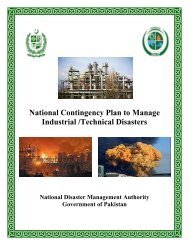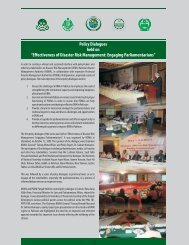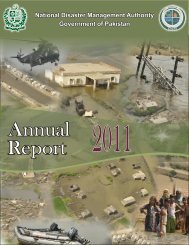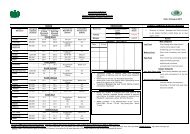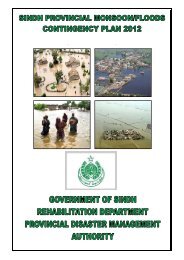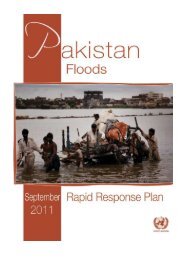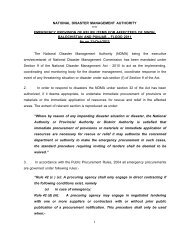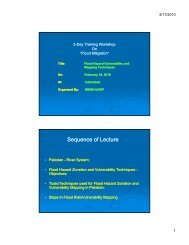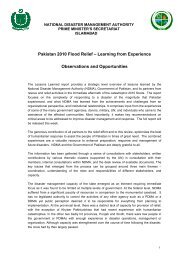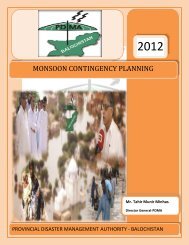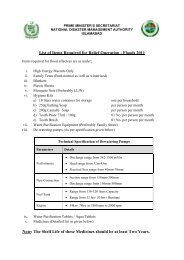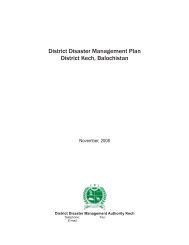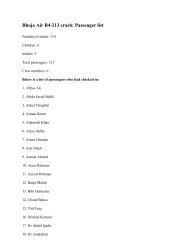National Disaster Response Plan (NDRP) March 2010 - NDMA
National Disaster Response Plan (NDRP) March 2010 - NDMA
National Disaster Response Plan (NDRP) March 2010 - NDMA
You also want an ePaper? Increase the reach of your titles
YUMPU automatically turns print PDFs into web optimized ePapers that Google loves.
61<br />
(p) Monitoring gives you feedback for the future plan of the food aid and<br />
may include feedback on selection of the beneficiaries or needs<br />
improvement, usefulness and appropriateness of food items, quantity,<br />
quality, and distribution system. The methodology can include interviews<br />
with communities, individuals, monitoring of the food distribution card<br />
etc.<br />
(4) Standards<br />
b. Non-Food Items<br />
(a) The food aid programme in emergencies must fulfill the nutritional<br />
requirement of 2100 cal/person/day.<br />
(b) The food items to be appropriate, acceptable to the communities and<br />
according to the local culture, communities‟ eating habits, local practices<br />
and can be efficiently used at household level.<br />
(c) The food provided to the communities should be of good quality and fit<br />
for the human consumption. The food packing is properly done and<br />
instructions are written in a language which can be easily readable and<br />
understandable.<br />
(d) Food is stored, prepared and consumed in a safe appropriate manner at<br />
both household and community level.<br />
(e) The method of food distribution should be transparent, equitable and<br />
appropriate to the local conditions which may includes beneficiaries‟<br />
selection and registration, distribution methodology, selection of<br />
distribution point, safety and security and monitoring of the food aid after<br />
distribution 24 .<br />
(1) Clothing and Bedding. Affected population should have access to the<br />
clothing and bedding according to the practices to feel comfort, dignity and<br />
safety. Clothing and beds should be appropriate to the local culture, conditions,<br />
and climate and should be provided to children, women and men and all groups<br />
of the society without any discrimination. If the clothes and bedding is not<br />
appropriate, there is risk that the affected population may not use it and sell it in<br />
the market.<br />
(2) Hygiene Kit. Hygiene kit should be part of the Non Food Items distribution<br />
which helps to minimize the health risk in the camp situation. The hygiene kit<br />
items should be according to the local culture and locally available in the<br />
market. For example as part of the hygiene kit, it is important to consider the<br />
24 The Sphere Project Minimum Standards in <strong>Disaster</strong> <strong>Response</strong>



